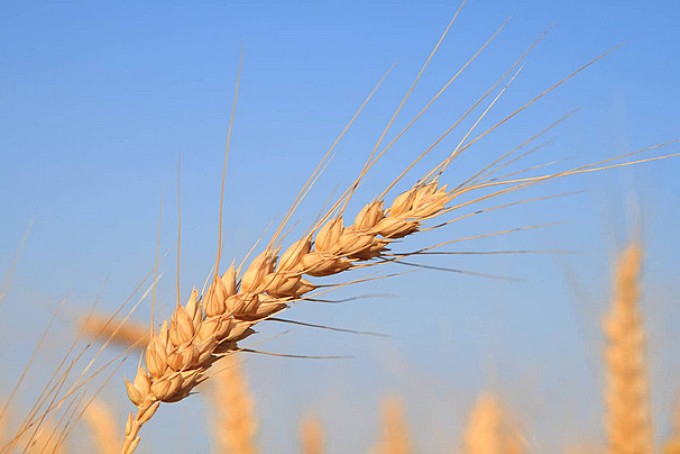
A new variety of wheat was developed by breeders of the A. Barayev Scientific and Production Center for Grain Farming. This was reported by the press service of the Scientific and Production Center with reference to 24KZ. It is noted that the variety is resistant to drought, has a high yield and is adapted to the local climate. At present, the experimental variety is being tested, the APK News agency reports.
In recent years, the demand for grain varieties that are less susceptible to drought and various diseases has increased among farmers in the Akmola region. Therefore, local agronomists are carefully engaged in the selection of grain. It takes at least 5 years to develop a new variety and introduce it into the fields.
“The main direction in our conditions is drought resistance, high productivity, high grain quality. Recently, due to weather conditions, we have been mainly working on resistance to major diseases. These are stem brown rust and septoria. Three years ago, agronomists managed to transfer a new wheat variety "Taimas" for use. For this variety, a lack of moisture in the soil, lack of rain and prolonged summer heat are not an obstacle to a high-quality and large harvest," said Elzhas Kairzhanov, head of the laboratory of the A. Barayev Scientific and Practical Center for Grain Farming.
Last year, scientists managed to develop another new wheat variety.
"A new variety called "Shortandinskaya-24" was transferred to state variety testing last year. It has only passed the first year of testing, and there are still two years of testing to be done. We hope that the variety will pass, because the variety is very good, responsive to high agricultural background, and has high drought resistance," E. Kairzhanov also noted.
Akmola Region remains a risky farming zone. Therefore, the quality and quantity of the harvest depends not only on the climate, but also on the condition of the soil, crop rotation, and the use of mineral fertilizers. At the same time, it is important to follow the cultivation technology, scientists say.
"We offer farmers, depending on the soil and climate zones, which soil cultivation system is more acceptable. This includes direct seeding, minimum technologies, and which crop rotations are more intensive. With a set of oilseeds and legumes, we recommend more humid zones. In drier areas, for example, in the Akmola region on dark chestnut and part of the southern chernozems, we recommend less intensive rotations with a certain spring wheat and oilseed crops," said Kanat Akshalov, head of the laboratory of adaptive and agro-landscape technology at the Scientific and Production Center.
In recent years, the region's agricultural sector has focused on the achievements of agricultural science. Before the sowing campaign, scientists sent farmers a number of recommendations for field work. At the same time, this year, for the first time in the region, an agronomic council was created, which monitors the quality of seed material and compliance with agricultural technologies.